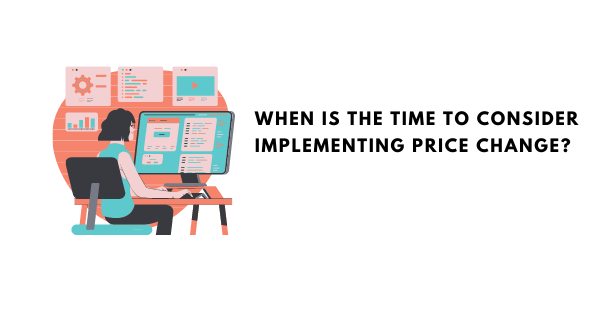How Often Should You Adjust the Pricing Strategy
General, Price-monitoring, eCommerce ·From the very beginning, all businesses share the same goal - achieve maximum profitability. Many factors can affect reaching that goal and pricing strategy is definitely one of those. Setting the right prices should always be one of the first steps in every business strategy. But, once the pricing strategy is set, how often should it be changed or adjusted?
Let’s shed some light on it.
Good Results Don’t Mean No Changes
Businesses usually spent long hours defining the best prices. Once they show good results, not many businesses are willing to consider implementing changes. Why change something that is clearly working? Well, at some point you will have to simply because of the constant market changes. New products and competitors are emerging, one market can get oversaturated, and so on. That being said, all of those factors can have an impact on your prices and changes become inevitable. The effect can be significant, both positive or negative, so changes in the pricing strategy shouldn’t be taken lightly.
It’s very important to point out that there is no strict rule when it comes to timing. No one can predict when will be the exact time for your business to change its prices. This is because the market is constantly fluctuating and not all the changes will affect your business equally. For instance, big companies usually don’t have the need for frequent price changes, while the smaller ones usually do. Increasing the market share is usually one of the main goals for small businesses, therefore, they should be more willing to make price changes.
When Is The Time To Consider Implementing Price Change?

Setting the right pricing strategy is always a challenge both for brands and retailers.
There are a few reasons that should be considered when deciding whether to increase or lower the price.
Let’s see some of the situations where the price raise is justified.
1.Change in costs
When production (or any other) costs for the company increase, it’s expected to see a price increase as well. For instance, increasing production capacity usually leads to price increases. Higher labor costs, using new materials, and packaging are just some of the possible extra expenses.
2.The competition offers higher prices while bringing less value
It’s no secret that customers love lower prices. But, lower prices are are not always the most important factor. In fact, customers are in the hunt for great, unique value. Thus, it’s very important to explain why your offer is superior. Customers are willing to pay more if they know that they are receiving a superior quality.
3.Inflation
Not all market changes are under your influence and inflation is a good example. If inflation happens, companies need to increase their prices in order to stay profitable. However, price changes should happen gradually and not overnight since that would only drive the customers away.
Of course, companies can estimate that it’s the right moment to decrease prices.
1.Bigger market share
If your goal is to enter a new market or to get a bigger market share, then decreasing the prices might help. Entering a new market can be difficult, therefore, offering lower prices than the competition might be one of the ways to stand out.
2.Cost decrease
We mentioned that a cost increase can also result in a price increase, therefore, a vice versa situation is also possible. This strategy can give your brand a competitive advantage. In this case, lowering the prices can be perceived as a reward for customers’ loyalty.
3.Reducing inventory
In case that there is a need for inventory reduction, lower prices can work out as a suitable solution. This comes especially convenient for tech companies. Whenever a newer product version gets released, the older one becomes cheaper.
When The Pricing Strategy Can Stay The Same?

However, no company should jump straight into price changes as soon as the market fluctuation comes. Not all events will affect your business to the same extent, so there is no need to respond to everything. Speaking from a business perspective, it’s always smarter to wait than to make poor decisions that can affect your business in the long run.
But, that brings us to the following question…
How To Know When to Make The Changes?

We explained all the possible scenarios, but it’s still unclear how to recognize the right moment for implementing the changes. That’s the hardest part. If your pricing strategy is not well thought out, it can easily result in entering a price war.
In order to be able to make such a complex decision, you must be well informed. One of the best ways of doing this is by having the help of a reliable price monitoring tool. Many such tools are now available on the market, which can make the decision even harder.
If you find the right price monitoring tool. The process of analyzing your competitors, prices, demand, and even customers will be easier. Therefore, you should look for a comprehensive solution that can provide you all the necessary information.
Such solutions will allow you to follow the competitors’ price changes in real-time, meaning that you’ll know when is the right time for you to react as well.
Conclusion
As you can tell, pricing strategy is not a one-time job. It requires constant effort. The market never stays the same, so neither should your business. However, your actions shouldn’t be reckless but instead based on detailed analysis.
How do you plan your pricing strategy? Any tips to share? :)
